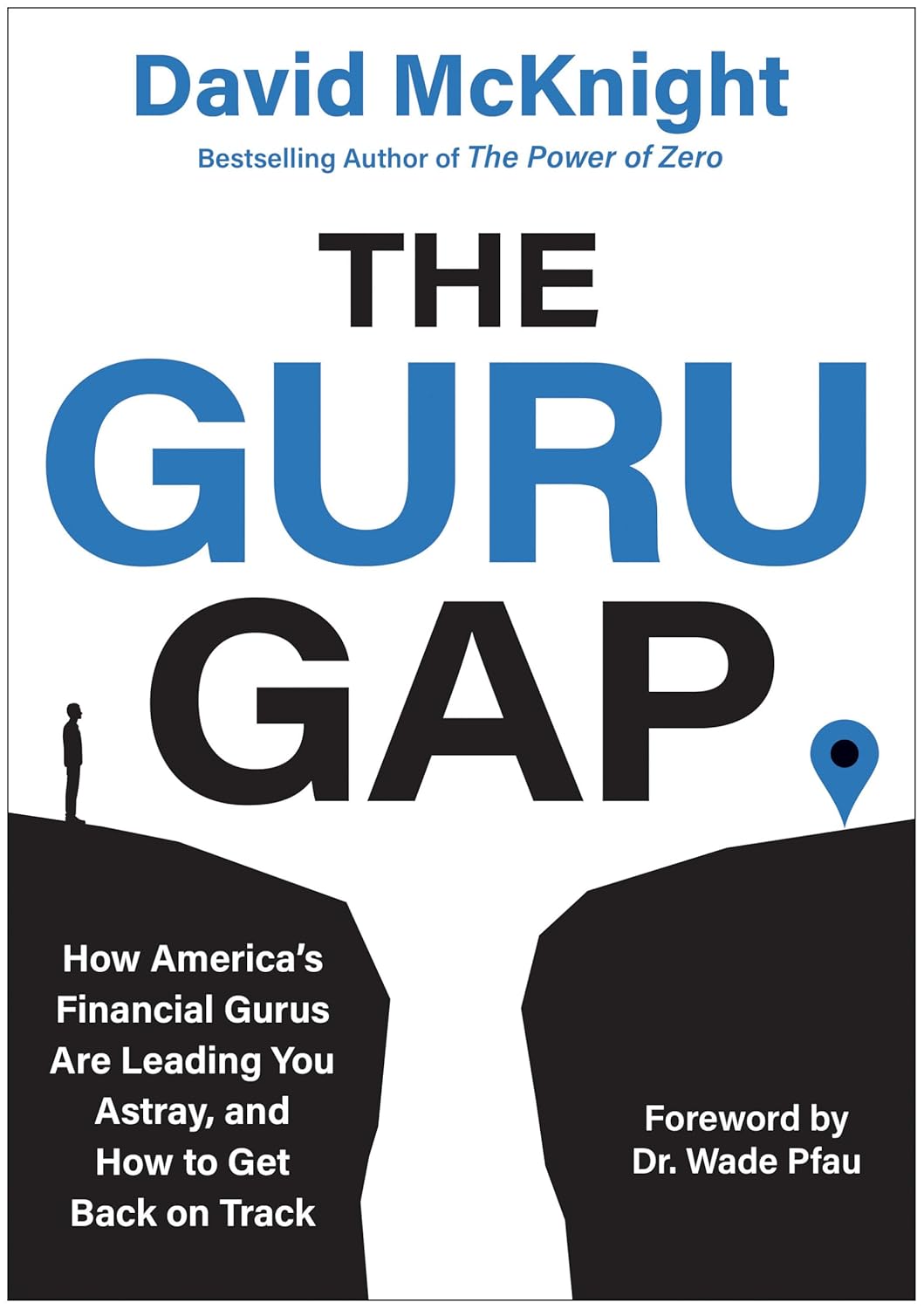Generally speaking, there are two “camps” (or schools of thought) for investing for and creating an income stream in retirement. The first could be called the “probability-based approach,” and the second the “safety-first approach.”
These “camps” share some things in common but are often at odds with each other. The key difference is that the probability-based approach favors a diversified portfolio of stocks and bonds. In contrast, the safety-first approach leans toward using insurance products such as annuities and life insurance.
Tensions between the two can get pretty intense at times; an example is the dust-up on social media in 2023 when Dave Ramsey said on his video broadcast that retirees should be able to withdraw eight percent a year from an all-stock portfolio.
Sometimes, the rhetoric on both sides of the issue gets slightly testy.
When I approach these things, I favor the approach that some may think is from the Bible but isn’t that was written by a German Lutheran theologian, Rupertus Meldenius, in a tract on Christian unity in 1627:
In Essentials Unity, In Non-Essentials Liberty, In All Things Charity
Some denominations have adopted it as a motto to guide their handling of theological and doctrinal disagreements within and without their denomination. I think it’s a good way to approach these issues, which are much less critical.
Both camps genuinely want to help retirees make wise decisions about funding and then distributing their savings in retirement. And most don’t dismiss everything the other camp recommends. So, I was curious when I recently saw that a new book had been published by financial advisor and author David McKnight titled, ”The Guru Gap: How America’s Financial Gurus are Leading You Astray and How to Get Back on Track.”
The book is a deep dive into the financial advice of some of the most well-known financial “gurus,” including Dave Ramsey, Suze Orman, Ken Fisher (Fisher Investments), and others. McKnight’s basic premise is that their guidance falls short for many of today’s retirement investors.
That said, McKnight is charitable in his critiques without compromising his opinions, and he expresses his appreciation for what the gurus do to raise financial literacy—especially Dave Ramsey. (He is a graduate of Brigham Young University, so he may also support many of Ramsey’s biblically oriented teachings.)
I don’t view his book as an outright attack on the popular “gurus,” although he certainly challenges them on many things. It’s more of a measured critique from someone who approaches some specific issues differently. He seems more interested in getting his viewpoint out than slamming them.
McKnight is hyper-focused on minimizing taxes in retirement and promotes “safety-first” retirement income strategies that others have encouraged, such as academics Dr. Wade Pfau and Dr. Ziv Bodie and retired actuary Steve Vernon. (It can be easy to get overly obsessed with taxes—I’ve been there and done that—but that was a discussion in another post.)
He contends that the gurus tend to oversimplify complex retirement financial strategies and recommend solutions that are too narrow. He believes this can leave some investors ill-prepared for the realities of retirement, especially the ”deaccumulation” (i.e., income production) stage.
Therefore, he emphasizes the need for personalized, math-based strategies tailored to individual financial situations rather than relying on broad, one-size-fits-all advice. For instance, he highlights how sticking to conventional rules, such as the 4% withdrawal rate or dismissing insurance product options like annuities and cash-value life insurance, may not always be the best approach and could potentially weaken a retiree’s ability to sustain lifetime income.
Mcknight advocates for a more comprehensive and balanced approach incorporating a mix of investment vehicles (stocks, annuities, and life insurance) to mitigate risks like market volatility, rising tax rates, inflation, and long-term care costs.
It’s important to note that he also sees and acknowledges the many positive aspects in the teachings of “gurus” like Dave Ramsey, especially in budgeting and debt reduction/elimination. I have also written several articles about my respect for Dave and also my concerns.
Some agreement
I agree with McKnight that mainstream financial gurus, notably Dave Ramsey, target and provide value to a broad audience. Still, I also agree with McKnight that their advice can sometimes fall short for more nuanced or complex financial situations.
However, as I’ve said before, Dave Ramsey’s teachings are intended to have the greatest impact on as many people as possible, not every unique personal situation in precisely the same way. That’s one of the reasons why Dave’s teaching has helped so many.
Dave delivers simple, actionable advice to people who desperately need it but may be overwhelmed by financial planning. (A good example is his “Baby Steps.”) He is also highly focused on motivating behavioral changes that can have a considerable impact, such as living below your means, avoiding lifestyle inflation, and building positive long-term financial habits like giving, saving, and investing.
McKnight accuses Dave and the others of oversimplifying their financial advice (e.g., avoiding debt, annuities, etc.). But for many people, that’s just what they need. They’re not likely to act on anything more sophisticated and complicated than that; they get overwhelmed.
High-income or high-net-worth individuals with more complex tax, estate, and investment needs will almost always seek professional advice, considering their nuances and complexities. They will focus more on longevity risk, sequence-of-return risk, estate planning, and long-term care planning.
Dave is also often criticized for what some believe is overly aggressive investment advice (e.g., all-stock portfolios with the expectation of 12% long-term average annual returns). I share some of these concerns, but an all-stock portfolio may be appropriate for younger investors, but not older people nearing or in retirement who need to be more conservative.
Others, like popular TV star Suzi Orman, sometimes advocate overly cautious retirement saving approaches, which are at the other end of the spectrum. That may also be appropriate for some who don’t have the stomach for the stock market, even though they may experience less growth in their savings.
Some concerns
I can appreciate McKnight’s proactive and math-driven approach, which seeks to fill gaps left by traditional investment strategies. However, I am also a big fan of simplicity and low cost and have concerns about the cost, complexity, and the potential for misuse of insurance products in certain situations.
Therefore, a rational middle ground is the best position. Not all insurance products are bad, but they should be used to address specific individuals’ specific needs and the risks they are uniquely suited to address. They can then be combined with low-cost, liquid investments like stocks and bonds for growth and flexibility.
A good example is an approach many academics and retirement planning professionals recommend: the “floor with upside.” An annuity (preferably a single premium fixed income annuity—SPIA) is added to a retirement portfolio of stocks and bonds and Social Security to secure a certain amount of income otherwise subject to the stock market or interest rate changes.
This type of strategy doesn’t rely on any single product or strategy to achieve a retiree’s goals but instead uses the best of several to optimize their situation. McKnight recommends using fixed index annuities for this strategy, which not all retirement planning academics and professionals agree with.
Thus, there are reasonable objections to some of Mckinght’s recommendations, especially regarding using insurance products as investments (where the gurus strongly disagree with him and with them).
They argue that insurance products like certain types of annuities and cash-value life insurance have higher fees and commissions compared to other investment vehicles, which can erode long-term returns.
They also say that insurance products typically provide lower returns than traditional investment portfolios (e.g., stocks and bonds) over the long term, especially after accounting for fees.
Finally, they complain that insurance-based financial products can be complex and difficult for clients to understand, potentially leading to misunderstandings and unmet expectations.
The “gurus” generally favor maintaining liquidity and flexibility in a portfolio, which they believe insurance products often lack due to surrender charges and restricted access to funds. When it comes to investing, they recommend a very straightforward approach—investing directly in low-cost index funds, ETFs, or a diversified portfolio rather than combining insurance with investments.
They also raise concerns about the high commissions associated with certain insurance products, noting potential conflicts of interest. This can lead to situations where these products are recommended based on the advisor’s financial incentive rather than the client’s best interests.
While McKnight and other insurance product proponents often highlight their tax-advantaged features, the gurus may argue that tax benefits can be replicated through different methods, like Roth IRAs, health savings accounts (HSAs), or tax-efficient investing strategies.
Financial advisors who avoid insurance products might contend that while they can be suitable in certain niche cases, they are not optimal for most investors. They would likely challenge McKnight’s assertions by promoting transparency, cost-efficiency, and straightforward investment strategies as the foundation of effective financial planning.
My take
I am not a guru (I wrote about it here), but I believe I have taken a reasonably balanced position on these issues in this blog. I try to acknowledge the strengths of insurance product proponents and critics and focus on contextual suitability and holistic stewardship, and financial planning, blending certain elements from both approaches to create income strategies that make the most sense for an individual.
Here’s my take on a couple of key topics that are the centerpiece of McKnight’s retirement strategies:
Annuities:
Annuities, especially fixed-index annuities, are commonly promoted for their lifetime income guarantees and protection against market declines. However, due to their complexity and potentially high costs, it’s vital for anyone considering them to fully understand how they work before making a decision.
I also believe that, for some, investing directly in high-quality stocks and long-term, high-quality bonds might be a simpler and more cost-effective strategy.
That said, while I advise caution against the overuse of insurance products, they can serve vital roles in specific cases. For example, annuities can provide much-needed guaranteed income for individuals with limited pensions or Social Security benefits and relatively low retirement savings.
Replacing some portion of a retiree’s fixed-income portfolio with an income annuity may make a lot of sense. It secures an “income floor,” leaving the riskier stocks portion of the portfolio to grow.
In that way, insurance products like annuities and cash-value life insurance can effectively address specific risks, notably longevity risk, market volatility, and tax liabilities. And, for individuals who find market volatility emotionally challenging—especially if that is the majority of their retirement income—guaranteed income from annuities can offer some peace of mind.
Cash-Value Life Insurance:
Such products have also historically been criticized for their complexity and cost. While improvements have been made, I still advise caution —especially by younger people— and recommend that individuals fully understand what they purchase, the contractually guaranteed versus non-guaranteed provisions, and the associated expenses.
If your need is primarily for life insurance, term life is almost always the best option. However, permanent life can be a good option if you’ve maxed out all the retirement savings vehicles available and still need to save more. Also, in high-net-worth or tax-sensitive scenarios, these products can offer advantages that are difficult to replicate with traditional investments.
On the other hand, there are some who avoid the stock market and prefer to fund their retirement using insurance products. I have no issue with that if they do so with a full understanding of the trade-offs involved.
Not always either/or
In summary, conversations about insurance products often present a false choice between insurance and traditional investments. In reality, a combination of the two can be effective. For example, integrating investments with annuities can help mitigate sequence-of-return risk while allowing portfolio growth.
Recognizing that each person’s financial situation is unique, I advocate a personalized approach to retirement planning. The decision to incorporate insurance products should be based on individual needs, a thorough understanding of how they work, and a careful evaluation of their costs and benefits.
“In Essentials Unity, In Non-Essentials Liberty, In All Things Charity.”

